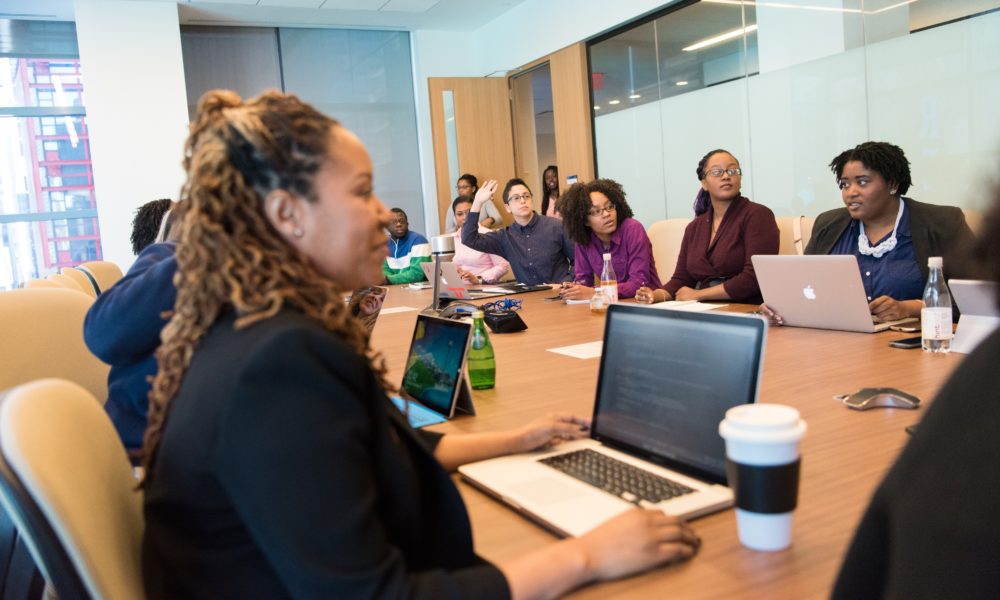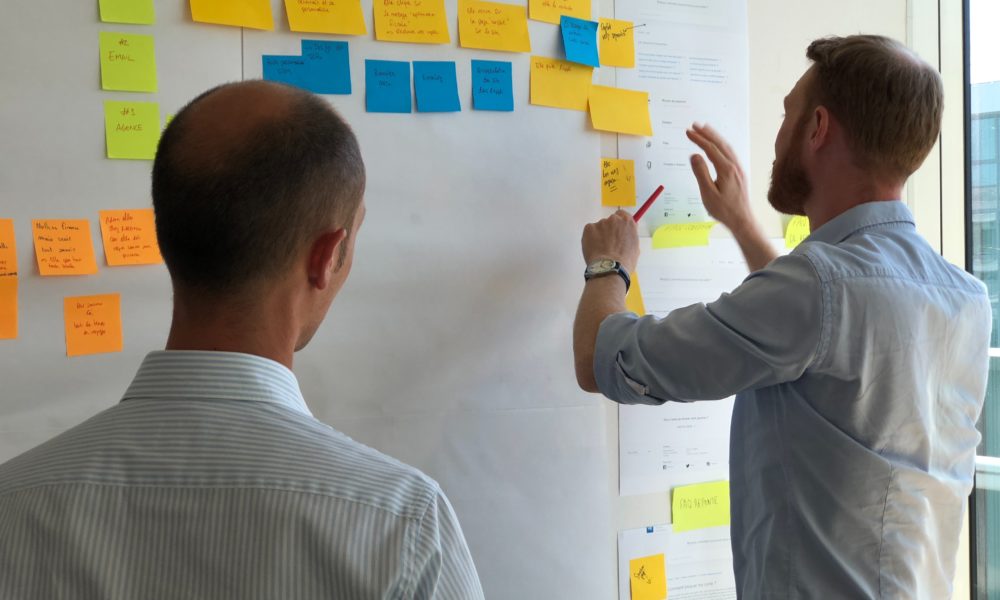Adult Learning Strategies to Improve Knowledge Retention
9K Views | 13 Min Read
It is a common fear for any learning designer: you exert countless hours of effort to create what you view to be the perfect curriculum. But when the course concludes, participants leave remembering little of what they’ve just learned.
Clearly, this is a scenario that no instructor wants to encounter. And in the fast-paced world of sales, it is an essential challenge to overcome.
For sellers to remain competitive today, staying on top of ever-changing knowledge and skill expectations is a requirement. That means sales enablement needs to create cohesive readiness programs to aid in this necessary learning. But how can practitioners ensure that the learning sticks after the program ends?
Helping adult learners retain knowledge is part science, part theory, part art, and part experience. Sales enablement professionals need to understand how each can be embedded in sales readiness programs to improve knowledge retention.
Science: The Neuroscience of Retention
The inner workings of how information is accepted and retrieved all comes down to the basic science of the brain.
The human brain is structured in four main sections: the brain stem, which controls basic bodily functions; the limbic system, which dictates emotions; the cerebrum, where cognitive processing and long-term memory occur; and the cerebellum, responsible for movement.
When information first enters the brain, it does so through the senses, registered in the limbic system. The brain then decides which information to pay attention to or ignore based on the perceived importance of the data.
That information then passes along to the short-term memory, staying there temporarily before being encoded into long-term memory. This transfer is a critical stage of retention. As information enters into short-term memory, it begins disappearing almost immediately. If the working memory cannot find a place to store the information, it will be gone within a matter of seconds.
Only the information that is deemed most important will make it into long-term memory – and there are a few techniques sales enablement practitioners can use to increase the likelihood of information making the cut.
- Connect to prior knowledge. If information relates to something that already exists in long-term memory, it is easier for the brain to recognize the importance of the information and know where to store it.
- Elicit emotions. When people respond emotionally to something, the limbic system takes over and rational processes are shut down. This enhances the memories associated with emotional events.
- Chunk information. People can better retain information that is organized into bite-sized, digestible sections because it is more easily stored and retrieved by the brain.
Theory: The Assumptions of Andragogy
While the basic functions of the brain are the same across all humans, as humans grow and develop, the brain matures as well. As proposed by Malcolm Knowles’ theory of andragogy, this means that the way adults learn and retain information is fundamentally different than children. At the core, children require more structure and guidance through their educational journeys, while adults expect more responsibility and autonomy.
The six key pillars of how adults best learn identified by Knowles are below, as well as strategies sales enablement can employ in sales readiness programs to appeal to the adult audience:
1. Need to know: They need to understand why something is important. People’s sense of “why” is powered in the executive control functions of the brain, which are more well-developed in adults. By connecting concepts to a clear purpose that communicates what the benefit is for them, adults are more likely to perceive information as important.
2. Self-direction: They have a self-concept of who they are. Adults have more mature self-regulatory functions in the brain than younger people. Give sales reps the freedom to learn independently, providing them with a mentor or other facilitator of learning after formal training.
3. Experience: They bring life experience and want to be recognized. Adults have more experience to connect new knowledge to, so give sales reps the opportunity to express their past experiences so that they can expand on those for better learning. Additionally, engage them in knowledge sharing to recognize the expertise they already have.
“I think it really fosters a different type of collaboration when one of the reps bring something to the team,” said Jake Spear, senior manager of sales operations at ringDNA. “I’m actually really excited about having more rep involvement in our training sessions where they’re running things.”
4. Readiness to learn: They are practical. People want to feel safe before they’re emotionally and physically ready to learn, as heightened emotions can inhibit rational thinking. Provide as much context and preparation materials for sales reps so they enter a learning environment prepared and emotionally ready to learn.
5. Orientation to learning: They prefer relevance. The human brain learns best when facts are embedded in natural contexts, which is why we need learning to connect to problems in our lives. Give examples and use analogies to demonstrate how learning can be applied to the day-to-day realities of their job, emphasizing certain struggles that they may have experienced in the past to create resonance.
6. Motivation to learn: They are internally motivated. Positive emotions evoke increased levels of neurotransmitters that enhance learning. While external motivators such as prizes can encourage sales reps to participate in a learning experience, utilize internal motivators – such as job satisfaction – so that sales reps can connect to the learning experience on a personal level.
Art: Design Strategies to Aid Retention
The ways in which learning experiences are structured and the methods of delivery can also impact the likelihood of retention. For people to retain learning, their brains first need to be willing to accept new information. Consider how you can design an environment that is supportive of learners’ needs and opens people’s minds to information being shared. Some potential strategies include:
Patterns
Since our brains crave associations with prior knowledge, it is important to create patterns throughout learning experiences to connect new ideas to familiar concepts and provide contextual cues for when to apply those ideas. For example, vary testing scenarios and environments so that when it comes time to use that knowledge in the real world, sales reps will have a variety of contextual cues for when to do so.
Spacing
Spacing in terms of both content and timing is beneficial to retention. With content, it is often said that repetition aids learning. While repetition can be a useful tool for recalling information, it doesn’t actually help students to learn how to problem-solve. By varying concepts and approaches to scenarios in the learning environment, sales reps also learn how to identify the best strategy for completing a problem.
In terms of timing, spacing out learning time leads to prolonged retention of the material. While cramming might help learners grasp information in the short term, learning that is distributed helps participants internalize the content over time.
Emotional Context
When situations are stressful or emotionally charged, it can cause people to rely less on intellectual knowledge and more on automatic responses. By removing barriers in the structure of the program, such as extensive time requirements, or external stressors, such as pressure from managers, sales enablement can help ensure that participants in the learning environment are in the right headspace to accept new information.
Basics
The basic human needs of sleep, exercise, rest, and food are extremely important for proper brain functioning, and sleep even enhances the quality of memory. Keep in mind how your sales readiness program might impact a person’s ability to get these basic needs – and assist learners in the process when possible. For example, build breaks into the schedule so learners can take time to rest, provide food for sessions overlapping with mealtimes, and avoid scheduling learning activities during times where the demands from their job will be high.
Experience: Utilizing Practice & Feedback
When the brain is faced with the decision to encode information into the long-term memory, “use it or lose it” is the motto. As we learn, our brains are constantly trying to make room for more information. If information is not used and applied, the brain is much less likely to retain that information.
That’s why practice and feedback are critical components of learning – they turn information into action, thereby increasing long-term retention. In fact, retention rates for experiential learning in this way can be as high as 90%.
“Knowledge is potential power, applied knowledge is power,” said Tanya Kunze, CEO of SWIFT Coaching.
Consider the following strategies for utilizing experiential learning through practice and feedback:
Practice
The quality, frequency, and timing of practice are all important elements that impact the effectiveness of practice. When it comes to quality, ensure that learners are given opportunities to apply skills rather than simply recall information. Mixing up practice simulations to account for different prompts and trigger actions can help to better prepare sales reps for experiences they will likely encounter in their day-to-day.
The frequency of practice should be based on the complexity of the concept. If errors could have serious consequences, then the practice should occur more often, whereas practice could be less frequent if job aids will be available after the program for a certain skill.
Similar to the spacing of content, distribute practice in smaller chunks throughout the learning session. This will help learners absorb the information and better understand how to incorporate the concepts in combination with other topics covered in the program.
Feedback
To help ensure that feedback is both useful and constructive to the learner, follow the “what, so what, now what” structure. This frames feedback as a conversation rather than an evaluation and invites the participant to self-reflect. Ask the following questions during each stage:
- What: Was the task completed correctly or incorrectly? What mistakes were made?
- So What: What was the impact of the outcome?
- Now What: How can the participant improve the next time?
“We have to be able to give sensitive feedback to people…to evaluate in a constructive way without being mean at all, but be able to give a good bit of feedback or a good area of improvement in a way that makes the person feel good,” said Lena Chudasama, sales enablement lead for EMEA at Taboola.
Retention of learning is essential for sales readiness programs to produce business impact. By understanding how the science, theory, art, and experience of learning all play a role in how adults retain knowledge, sales enablement practitioners can create more effective sales readiness programs.
“Today’s fast-paced environment and availability of information set a very high standard for the pace in which we learn and are expected to acquire new information,” said María Belén Eglez, senior revenue enablement manager at Algolia. “Communicating to sales reps in a way that they will best retain the information is key to setting them up for success from day one.”


















